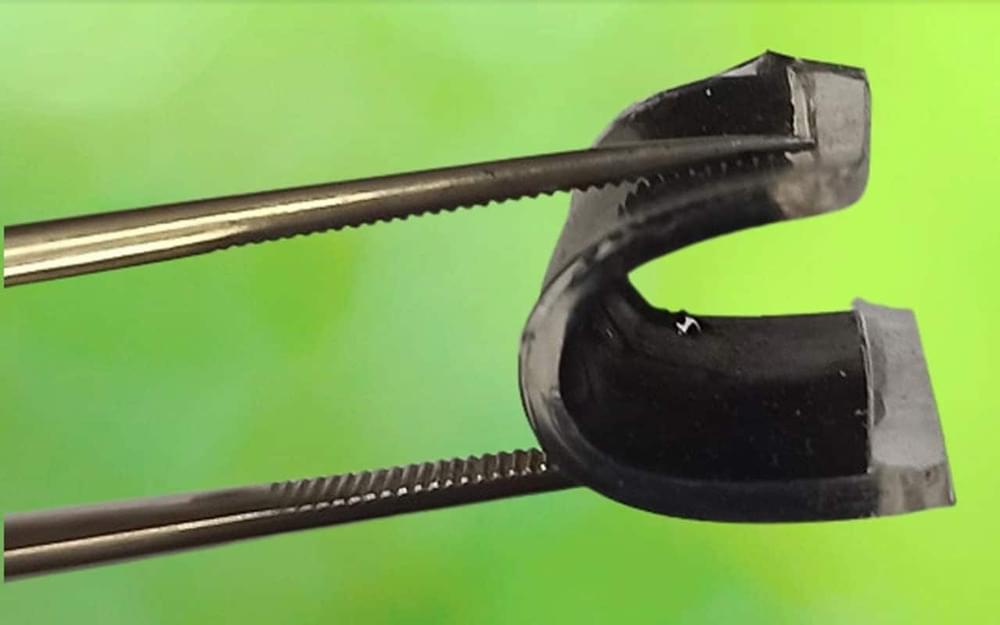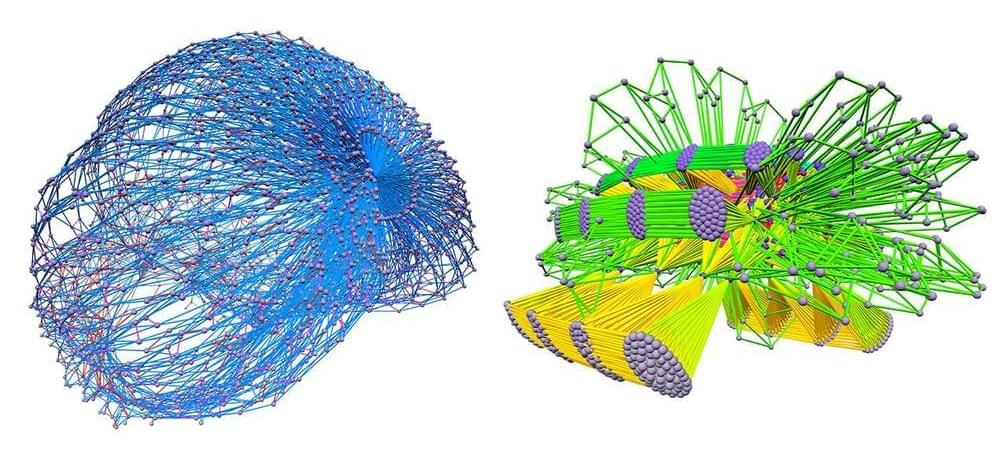Gran Turismo Sophy
Posted in innovation, robotics/AI
MIT’s biodegradable surgical tape is designed to seal tears in the gastrointestinal tract, potentially preventing sepsis-causing leaks.
The strongest part of a tree lies not in its trunk or its sprawling roots, but in the walls of its microscopic cells.
A single wood cell wall is constructed from fibers of cellulose—nature’s most abundant polymer, and the main structural component of all plants and algae. Within each fiber are reinforcing cellulose nanocrystals, or CNCs, which are chains of organic polymers arranged in nearly perfect crystal patterns. At the nanoscale, CNCs are stronger and stiffer than Kevlar. If the crystals could be worked into materials in significant fractions, CNCs could be a route to stronger, more sustainable, naturally derived plastics.
Now, an MIT team has engineered a composite made mostly from cellulose nanocrystals mixed with a bit of synthetic polymer. The organic crystals take up about 60 to 90 percent of the material—the highest fraction of CNCs achieved in a composite to date.
Silicon Valley hydrogen fuel cell innovator Hypoint has inaugurated a new UK unit intended to speed development of its air-cooled aviation power technology, and ready it to supply zero-carbon power to next-generation aircraft like electric takeoff and landing vehicles (eVTOL) as they prepare to launch services.
HyPoint’s tech uses compressed air for both cooling and oxygen supplies delivered to its fuel systems, which are lighter, less polluting, have longer lifespans, and enable seven times more flight capacity than lithium-ion and other chemical batteries. Those attributes are luring developers of existing, new drone, and eVTOL craft to give emerging hydrogen cell products serious consideration as drivers of their vehicles – especially as the world seeks to reduce its carbon output. In 2018, aviation sector’s share of global CO2 emissions was 2.5%.
A team of researchers from the University of Surrey’s Advanced Technology Institute (ATI) and the Federal University of Pelotas (UFPel), Brazil, has developed a new type of supercapacitor that can be integrated into footwear or clothing, an advance with applications in wearables and IoT (Internet of Things) devices.
A supercapacitor is an electricity storage device, similar to a battery, but it stores and releases electricity much faster.
The researchers have devised a novel method for the development of flexible supercapacitors based on carbon nanomaterials. The new method, which is cheaper and less time-consuming to fabricate, involves transferring aligned carbon nanotube (CNT) arrays from a silicon wafer to a polydimethylsiloxane (PDMS) matrix. This is then coated in a material called polyaniline (PANI), which stores energy through a mechanism known as pseudocapacitance, offering outstanding energy storage properties with exceptional mechanical integrity.
The activist Physicians Committee for Responsible Medicine claims that macaque monkeys endured “extreme suffering” in a lab funded by Musk’s startup Neuralink.
Researchers have uncovered neural circuitry that allows the CA1 region of th… See more.
Summary: Researchers have uncovered neural circuitry that allows the CA1 region of the hippocampus to communicate with its counterpart in the opposite hemisphere despite there being no connection between them.
Source: RIKEN
RIKEN neuroscientists have uncovered the neural circuitry that permits a subregion in the hippocampus to communicate with its counterpart in the opposite hemisphere despite there being no direct connection between them. While not directly applicable to people, this finding is important for informing future studies of the mouse brain.
The hippocampus is well known for its role in learning and memory. Vertebrates have two hippocampi: one on the left side of the brain and the other on the right. Each hippocampus has various subregions, including the CA1 and CA3 areas.
Byron Cook, the head of Amazon’s automated-reasoning (AR) group, think his field is entering a “golden era”, driven by a virtuous cycle of improving tools and b… See more.
Distributing proof search, reasoning about distributed systems, and automating regulatory compliance are just three fruitful research areas.
Titanium is the lifeblood of metal 3D printing. As the technology was initially driven by the aerospace and weapons sectors, it has become the metal of choice for its high strength-to-weight ratio. Now, Desktop Metal (NYSE: DM) has qualified titanium alloy Ti-6Al-4V (Ti64) for its Studio Systems 2, making it one of the first office-friendly machines capable of 3D printing with titanium. One of Desktop Metal’s first customers in the space appears to be Apple co-founder Steve Wozniak, whose new startup, Privateer Space, aims to clean up space junk.









